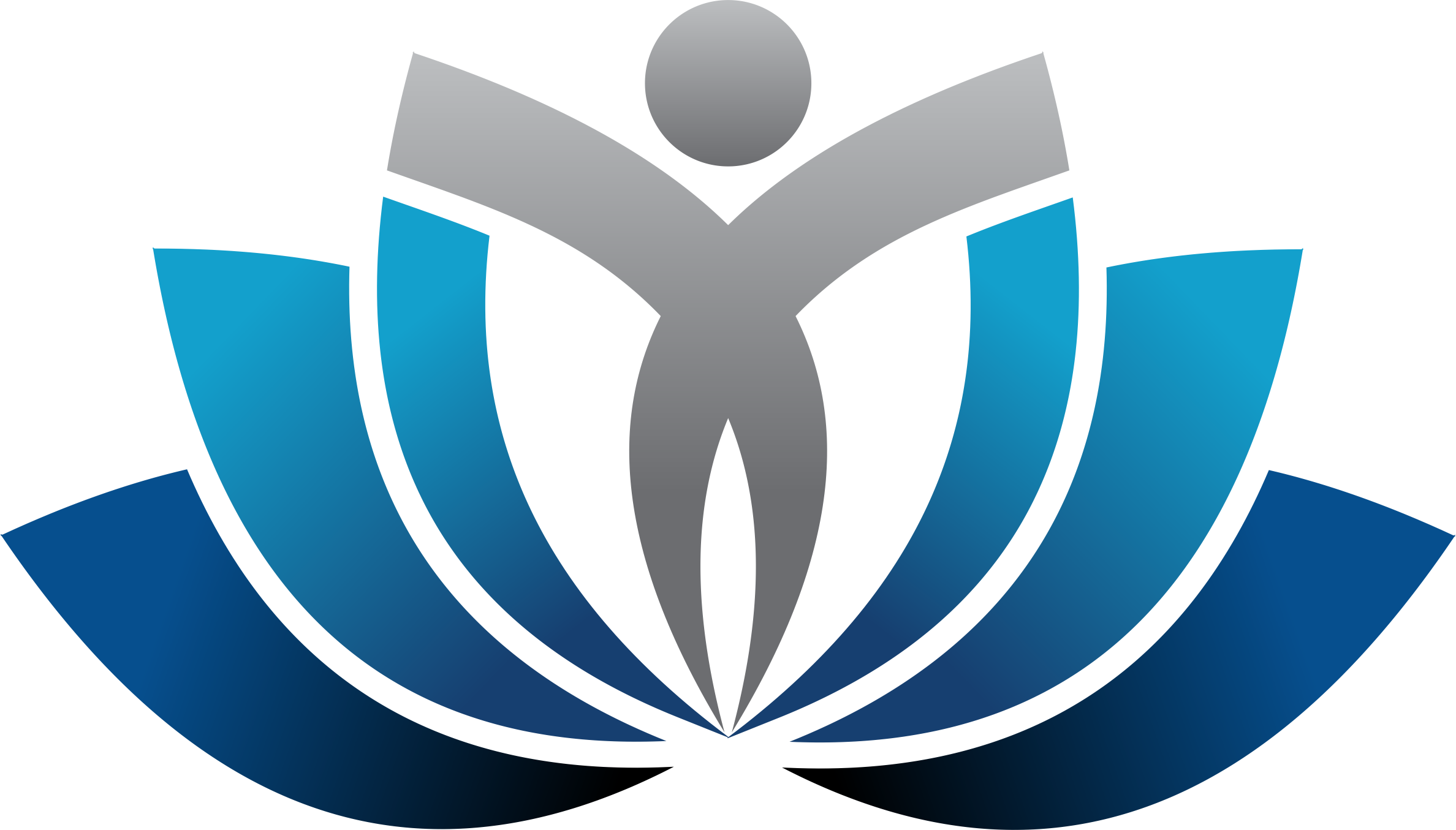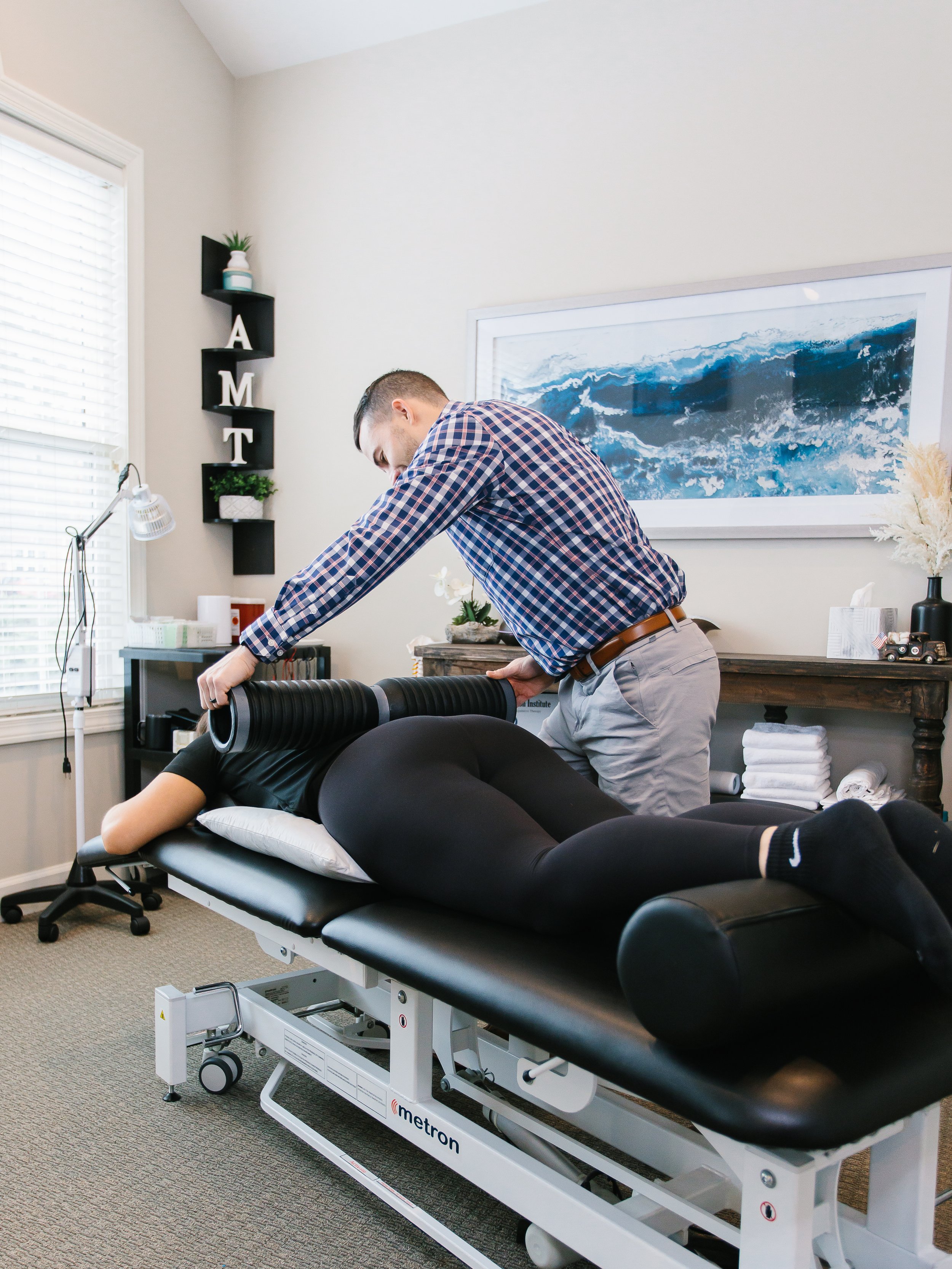Treatments Offered
dry needling
Dry Needling is a modern, evidence-based treatment technique performed by Doctors of Physical Therapy and physicians using fine, filiform needles in order to treat many different neuro-musculoskeletal conditions. The term 'Dry' means that no medication is used and this eliminates the risk of negative side effects typically seen with various injections or oral medications. Though the needles used are the same as acupuncture needles, it is not acupuncture or Oriental (eastern) Medicine. The needles are inserted in and around muscles, ligaments, tendons, scar tissue, and nerves that may be causing pain and dysfunction in order to elicit natural healing to occur by improving blood flow, break up fascial adhesions and restrictions, and reduce tissue sensitivity when combined with electrical stimulation.
Literature supports Dry Needling as an effective treatment for many conditions including myofascial trigger point pain, chronic pain, general muscle soreness, nerve pain, referred pain, mechanical pain, and headaches. Evidence also supports its effectiveness on joint pain, including arthritis of the shoulder, hip, and knee. Dry Needling can help anyone from young teens to older adults, from sedentary individuals and elite athletes.
Patients often do not even feel the needle being inserted due to its small diameter. In fact, it is roughly 1/8th the size of a hypodermic needle used to draw blood or perform injections. The effects can last anywhere from a few hours to a few months depending on the underlying pathophysiology. Conditions including clotting disorders and uncontrolled hypertension increase the chances of negative side effects and patients with these conditions or patients taking prescription blood thinners should speak with their physician before treatment.
Fascial Needling
A minimally invasive procedure using monofilament needles to create micro-trauma in the skin and subcutaneous tissue stimulating the production of collagen, elastin, and blood capillaries for the treatment of acne scars, wrinkles, stretch marks, and more.
PreNatal/Postpartum Massage
A Massage treatment tailored for expecting mothers or new mothers in order to promote relaxation and recovery of the muscles and ligaments around the spine, abdomen, pelvis, and thighs. This facilitates widening of the hips in preparation for delivery, and facilitates recovery in those postpartum.
A special body pillow/bolster is available so that moms can safely and comfortably relax in a prone (face down) position without harm to baby.
Doula services
A professional labor assistant who provides physical and emotional support to moms and their partners. They can assist in the techniques of breast feeding, breathing during labor/contractions, emotional comfort and support, and aid in the communication between you and other medical professionals. Doula’s also offer support during miscarriages and stillbirths.
Studies have demonstrated that in Doula-involved pregnancies and deliveries, there is a reduced incidence of C-section, shorter length of labor, decreased use in the amount of pain medication, and fewer negative experiences.
Medical Massage
Similar techniques and rhythms used during a traditional therapeutic massage, but aimed to target and treat specific limitations and/or ailments caused from chronic pain, injury, or stress. Our massage therapist has thorough, in-depth knowledge of many injuries and pathologies and utilizes her knowledge to create a treatment tailored specifically for the improvement of those conditions. This type of massage is more outcome-based and relies on proper feedback from the patient in order to ensure the most beneficial result.
Deep tissue/sports massage
The use of slow, firm pressure to release muscle tension, myofascial adhesions, and tendons/ligament dysfunction to improve range of motion and biomechanics for improved quality of movement. This type of massage is typically favored by athletic individuals who have increased muscle tone or body mass in order to effectively treat the underlying tissues.
joint manipulation
Joint manipulation of the spine or other joints in the body performed by Doctors of Physical Therapy and Doctors of Osteopathic Medicine has been shown in medical literature to improve overall function and reduce pain in neuromusculoskeletal conditions. These techniques utilize high velocity, low-amplitude thrusts to create a quick stretch on the joint and usually result in a 'pop' medically referred to as a cavitation. The cause of this cavitation is up for debate and the two leading theories have yet to be fully supported. Though, research does show there is a release of natural pain-killers, reduction of pain signaling to the brain, improved joint mobility, and reduced sensitivity in both the spine and corresponding areas into the arms and legs following proper manipulation of the joints.
body tempering
A process in which we use specific mechanisms to break tissue out of its adhesive state by being placed under a crushing load. This strength prepping helps to prevent hernias, tears, tweaks, muscle ruptures and protect against trauma. Promoting and increasing individual performance by allowing the body to work independently of muscle adhesions.
Dr. Grant Smith performing body tempering with an 80lb tempering rod.
pelvic floor physical therapy
Pelvic Floor Physical Therapy is a branch of PT using the principles and treatment approaches of common musculoskeletal and neuromuscular interventions on the muscles of the pelvic floor. Pelvic Physical Therapy utilizes both external and internal assessment to test the patient’s functional ability, then provides a comprehensive plan of care to reach the patients goals. These goals can include improving the strength and coordination of pelvic floor muscles; alleviate pain, weakness and dysfunction in the muscles as well as limit severity of prolapses, incontinence and other conditions associated with the pelvic floor.
manual lymphatic drainage
MLD is a light, skin-stretching massage that helps promote the movement of lymphatic fluid out of the swollen limb. It should not be confused with a traditional massage. MLD is specifically focused on the lymph vessels to help the flow of lymphatic fluid. Therapy is applied to your unaffected areas first, making it possible for the fluid to move out of the affected area, or “decongest” the region. MLD helps open the remaining functioning lymph collectors and move protein and fluid into them, as well as to help speed up lymph fluid flow through the lymphatics.
cupping
Cupping has been used for centuries in the practice of Oriental Medicine (or Traditional Chinese Medicine) in order to treat all types of diseases. In the medical community, cupping is widely accepted as a therapy tool in order to treat neuro-musculoskeletal impairments causing pain. These impairments include muscle soreness, spasms, decreased flexibility, and reduced blood flow. The negative pressure inside the cups leads to an increase in blood flow, responsible for healing and repair. The cups also create a 'stretching' or 'tension' moment through the fascia underneath which leads to increased fibroblast activity. Fibroblasts are responsible for connective tissue healing, remodeling, and repair, and thus, reduces pain.
reflexology
The application of pressure to the feet, hands, and ears to trigger peripheral nerves and send an inhibitory signal back to the central nervous system in order to promote relaxation and blood flow. It also improves the overall functioning of organ systems such as the cardiac, lung, endocrine, and gastrointestinal systems via increased neuropeptide production and effectiveness.
Blood Flow Restriction Training (BFR)
BFR is a scientifically proven technique designed to increase muscle growth and strength with significantly less stress on joints. BFR performed by Doctors of Physical Therapy is a safe, completely customized training program based on the patient's individualized arterial and venous blood flow. Monitored each session, a cuff is applied to the desired limb to partially restrict blood flow, reducing venous return while allowing arterial flow to the targeted tissue. The restricted blood flow stimulates a hormonal response to release growth hormone and other anabolic hormones producing muscle growth. This metabolic change leads to a sensation of tightness and muscle "pump" with lighter resistance (usually around 20-40% of 1 rep max) but higher repetitions (typically 15-30 repetitions per set) with monitored short rest breaks. This advanced technique can be utilized to prevent atrophy post-operatively, during different loading phases of patients sessions, and or to protect joints.
and more…
CBD Products
Click here to learn more about the CBD Creams, Tinctures, and Gummies we carry.


